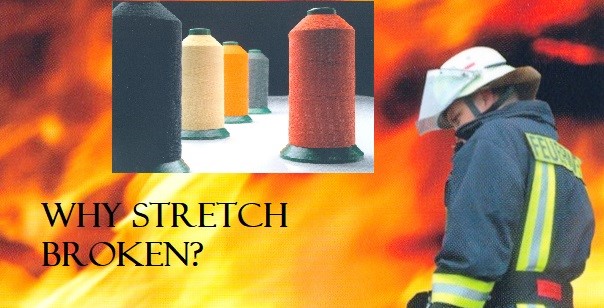Stretch broken spinning starts with stretching and breaking continuous filament yarn. This produces long discontinuous broken filaments that have a lower elongation and a thinner diameter due to the process they just went through. These filaments are much longer than those used in conventional cotton spinning and they can be spun into finer counts. With more individual filaments in the cross-section and long fibres it means that high strength, consistent spun yarn is available and because the elongation is low this fits perfectly with the requirements of sewing threads for many applications. Kevlar® is a typical fibre showing excellent properties that translate well into stretch broken and change some of the properties Kevlar® is known for.
But that isn’t all! Spun yarns grip much better than continuous filament so fabrics woven in stretch broken yarns will coat better than slippery filaments whilst still having a comparable strength. Having said that these yarns have a low hairiness compared to other spinning systems, so our stretch broken Kevlar® fits a space between a filament Kevlar® and a conventional ring spun Kevlar®
High abrasion resistance is also a key point where stretch broken yarns win. For protective workwear that has to perform in terms of durability as well as meeting all the flame retardancy standards stretch broken Kevlar® fits the bill.
Selvedge edges for carbon fibre fabric weaving can be better using stretch broken yarns because grip is also a useful attribute during weaving and also in subsequent processes by prepreggers in particular who prefer the strength of a stretch broken aramid fibre compared to a weaker polyester yarn.
Stretch broken spinning is done with Nylon, Aramids (Kevlar®, Twaron®, Nomex®, Conex®, Technora®), Pre oxidised fibres, Vectran®, UHMWPE
See our pages on Tay yarns and Meta and Para aramids or better still get in touch with us to see if we have a solution that might resolve an area of your business where you need a better solution.


